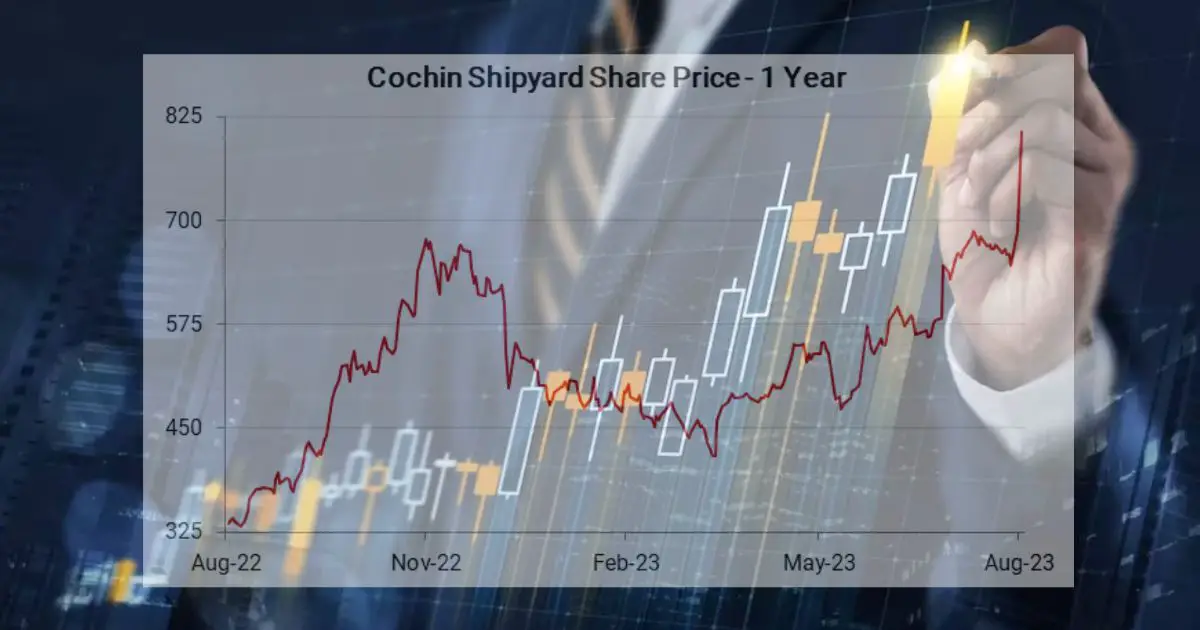Among the myriad of companies listed on stock exchanges, Cochin Shipyard Limited (CSL) stands as a prominent player in the maritime industry. This comprehensive analysis delves into the intricacies of Cochin Shipyard’s share price, unraveling the factors that influence its fluctuations and shedding light on the broader economic context.
Understanding Cochin Shipyard Limited
Before delving into the dynamics of Cochin Shipyard’s share price, it’s imperative to grasp the essence of the company itself. Established in 1972, Cochin Shipyard Limited has emerged as one of the largest shipbuilding and maintenance facilities in India. With a rich legacy spanning over four decades, CSL has etched its name as a beacon of excellence in shipbuilding, repair, and offshore fabrication.
Historical Performance
A retrospective glance at Cochin Shipyard’s share price unveils a journey marked by peaks and troughs, reflective of the volatile nature of financial markets. Over the years, CSL has weathered economic storms, navigating through the ebbs and flows of global trade dynamics and industry-specific challenges. From its humble beginnings to its current stature as a key player in the maritime domain, Cochin Shipyard’s share price trajectory mirrors its resilience and adaptability in a dynamic business landscape.
Key Drivers of Cochin Shipyard Share Price
- Industry Trends: The maritime industry operates within a framework shaped by global trade patterns, geopolitical developments, and technological advancements. Changes in shipping demand, regulatory policies, and innovations in vessel design exert a significant influence on Cochin Shipyard’s share price.
- Financial Performance: The financial health of Cochin Shipyard, as reflected in its revenue growth, profitability margins, and debt levels, plays a pivotal role in determining investor sentiment and, consequently, share price movement.
- Order Book Dynamics: The size and composition of Cochin Shipyard’s order book serve as a barometer of future revenue visibility and operational efficiency. Large-scale contracts, strategic partnerships, and diversification into new market segments can act as catalysts for share price appreciation.
- Macroeconomic Factors: Broader macroeconomic indicators, such as GDP growth, inflation rates, and currency fluctuations, exert a pervasive influence on Cochin Shipyard’s share price. Economic downturns may dampen investor confidence, while periods of expansion can fuel optimism and drive share price appreciation.
- Regulatory Environment: Compliance with regulatory standards, adherence to environmental norms, and adherence to corporate governance principles are critical factors that underpin investor trust and confidence in Cochin Shipyard’s operations, thereby influencing share price performance.
Analyzing Share Price Volatility
The inherent volatility of Cochin Shipyard’s share price is a reflection of market dynamics characterized by uncertainty, speculation, and investor sentiment. While short-term fluctuations may be driven by market sentiment and speculative trading activity, long-term trends are often shaped by fundamental factors such as earnings growth, industry outlook, and competitive positioning.
Comparative Analysis
Benchmarking Cochin Shipyard’s share price performance against its peers offers valuable insights into its relative strength and competitive positioning within the maritime industry. By juxtaposing key financial metrics, operational efficiency ratios, and market valuations, investors can gauge Cochin Shipyard’s performance vis-à-vis industry peers and make informed investment decisions.
Risk Factors and Mitigation Strategies
No investment comes without inherent risks, and Cochin Shipyard is no exception. From operational risks associated with project execution to macroeconomic headwinds stemming from geopolitical tensions, a myriad of factors can impact Cochin Shipyard’s share price trajectory. Implementing robust risk management strategies, maintaining a diversified revenue base, and fostering a culture of innovation and adaptability are crucial steps in mitigating downside risks and safeguarding shareholder value.
Future Outlook
In an era defined by rapid technological disruption and shifting global paradigms, the future trajectory of Cochin Shipyard’s share price hinges upon its ability to innovate, adapt, and capitalize on emerging opportunities. As the maritime industry navigates through the winds of change, Cochin Shipyard is poised to chart a course towards sustainable growth, underpinned by its strong fundamentals, strategic vision, and unwavering commitment to excellence.
Conclusion
The journey of Cochin Shipyard’s share price is a testament to the resilience, dynamism, and enduring value of one of India’s premier maritime institutions. Amidst the tumultuous currents of global markets, Cochin Shipyard stands tall as a beacon of stability and innovation, poised to steer through the waves of uncertainty and chart a course towards sustained prosperity. As investors navigate through the labyrinth of financial markets, the saga of Cochin Shipyard’s share price serves as a compelling narrative of resilience, growth, and the enduring pursuit of excellence.
On Thursday, Kotak Mahindra Bank Ltd. will be the center of attention following the RBI’s directive to stop issuing new credit cards and to stop onboarding new customers through its online and mobile banking channels effective immediately. Additionally, the stocks of Axis Bank Ltd. and Hindustan Unilever Ltd. will be watched closely following their quarterly earnings announcements. The board of directors of Axis Bank also approved raising Rs 55,000 crore through equity issues and non-convertible debentures. Nestle India Ltd., Tech Mahindra Ltd., Bajaj Finance Ltd., and IndusInd Bank Ltd. will also be watched closely following their announcement of quarterly results.

